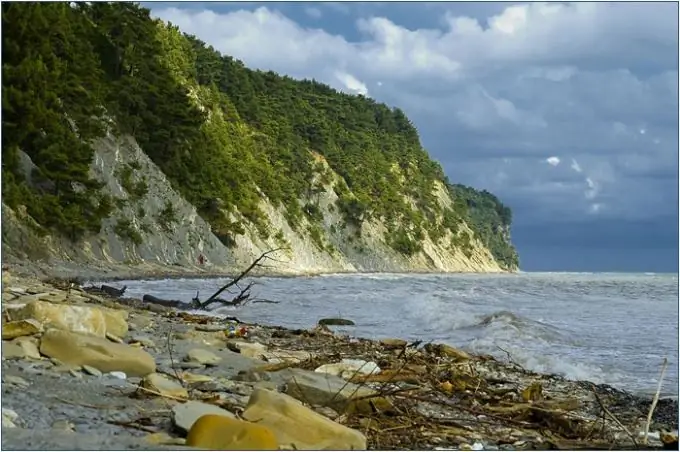A static composition can be turned into a completely cheerful scene - you just have to add a little sun, warmth and inspiration to it.

It is necessary
A sheet of paper, graphite stick, brushes, oil paints
Instructions
Step 1
Sketch out the outlines. Take a graphite stick and outline the outlines of the main elements of the painting. At this point, you need to focus on "snapping" the horizon, surf and headland outline.
Step 2
Write the sky. Using a 25mm decorating brush in short, random strokes, apply a mixture of white and cobalt blue to the sky. When the oil paint is dry, cover the sky with a second coat of paint - this time with wide horizontal strokes. Since the sky gets lighter as you get closer to the horizon, use white more.
Step 3
Draw sand. In order to depict sand, you will need a warm mixture of white, yellow ocher and a little black paint. Color the sandy beach with this mixture. With the same paint, outline the outlines of the boats and the smooth line of the surf.
Step 4
Make water underpainting. Paint the edge of the water in shallow water and wet sand on the beach with uneven, overlapping spots of paint. One of them is the mixture with which you painted the sand in step 3, and the second is undiluted white with a little yellow ocher and blue cobalt.
Step 5
Add a surf line. Combine burnt umber, white, and a little cobalt blue. Using a brush, draw a bold zigzag along the water's edge to indicate the surf line. Start with a thin line from the horizon, gradually widening it as you get closer to the front edge of the painting. Add some orange cadmium to show the reflection of the headland in shallow water.
Step 6
Reproduce the highlights. Use white, undiluted, to write a curving line along the edge of the coasting wave. Draw the light reflections on the water with spots of the same whitewash.
Step 7
Draw the distant shore. Paint a narrow dark green stripe along the horizon with a mixture of cobalt blue, lemon yellow paint, and a little burnt umber. Use clean white to paint highlights along the bottom edge.






